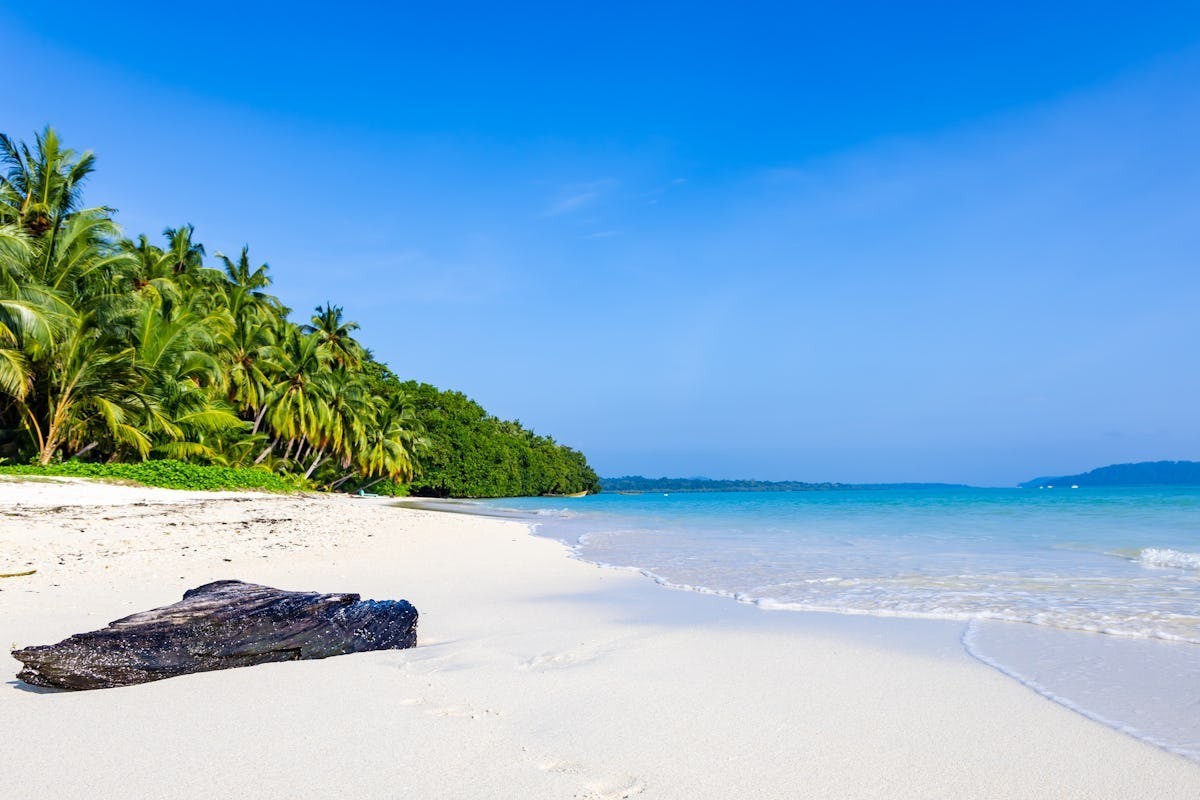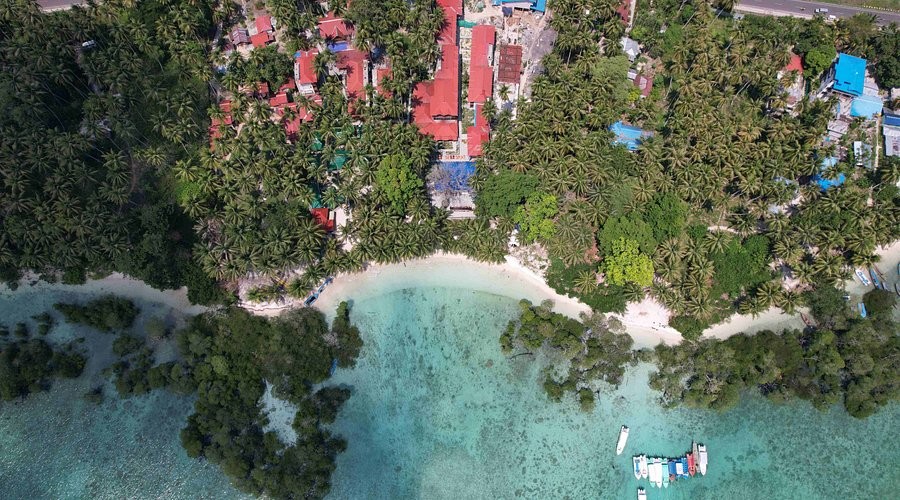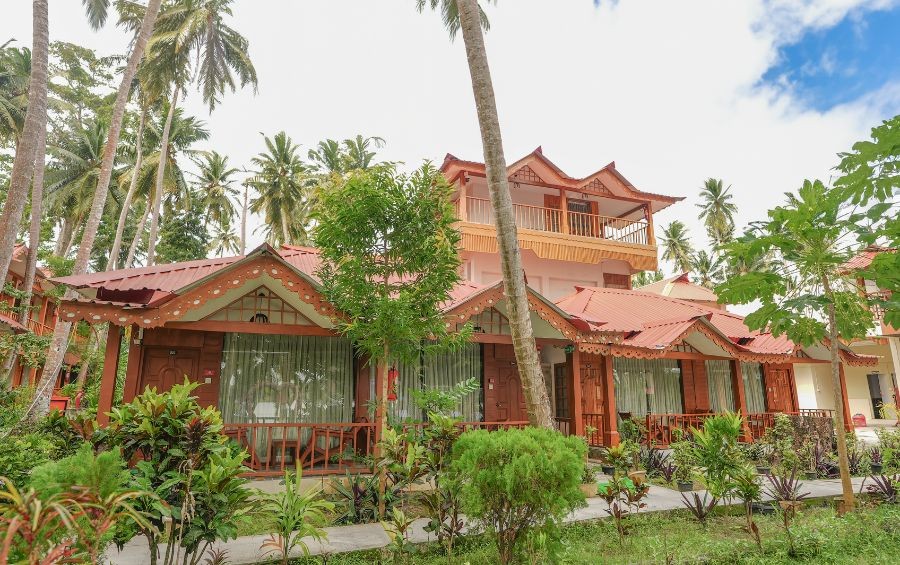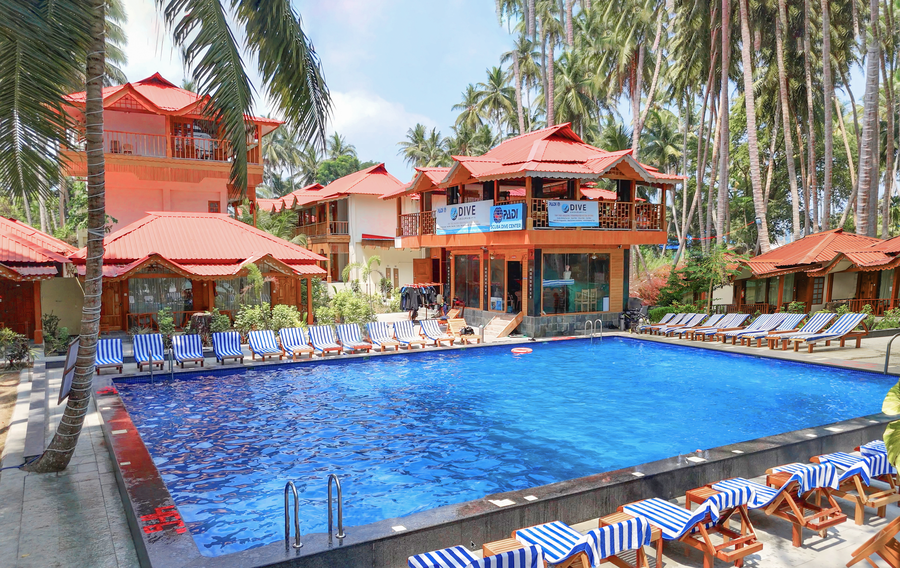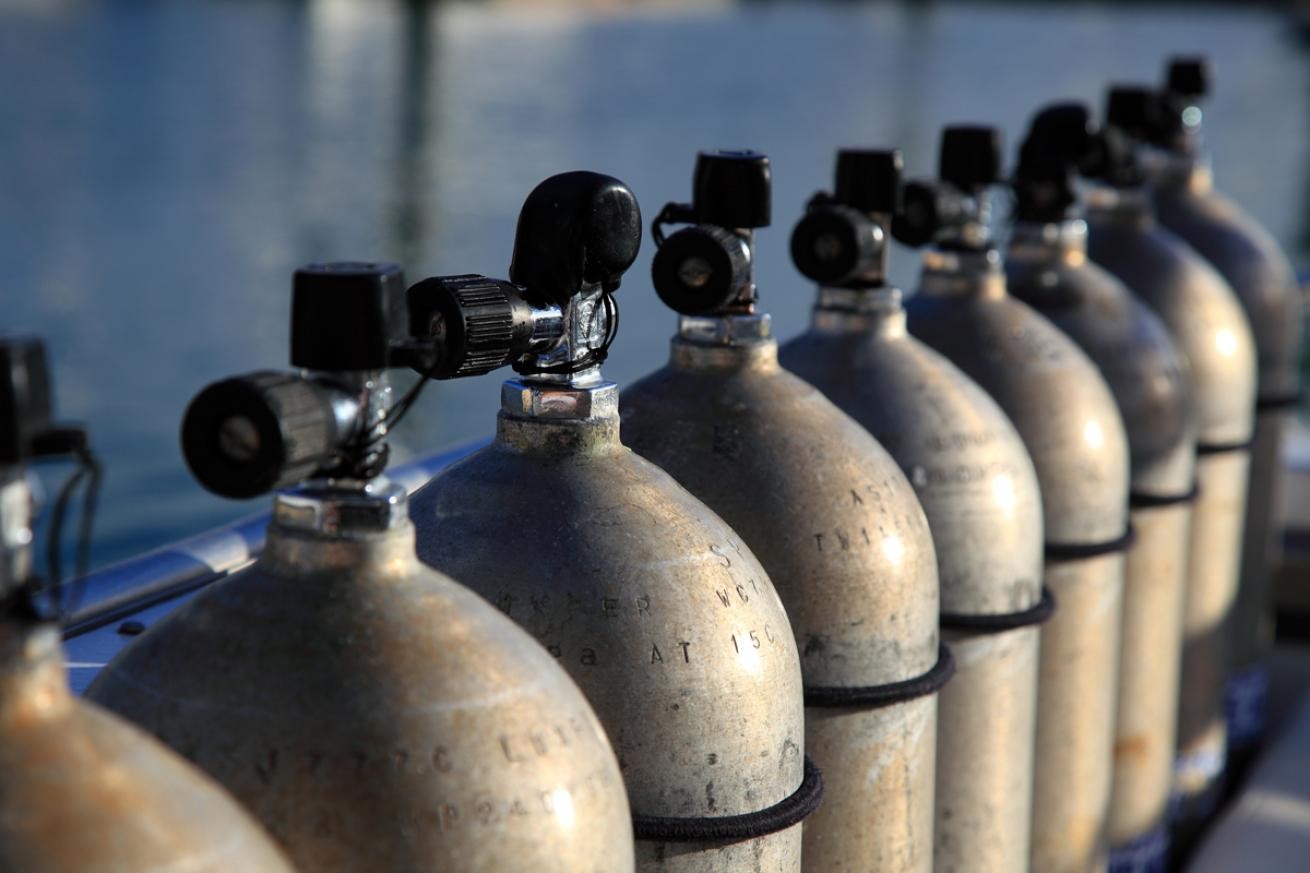Diving Sites in Port Blair



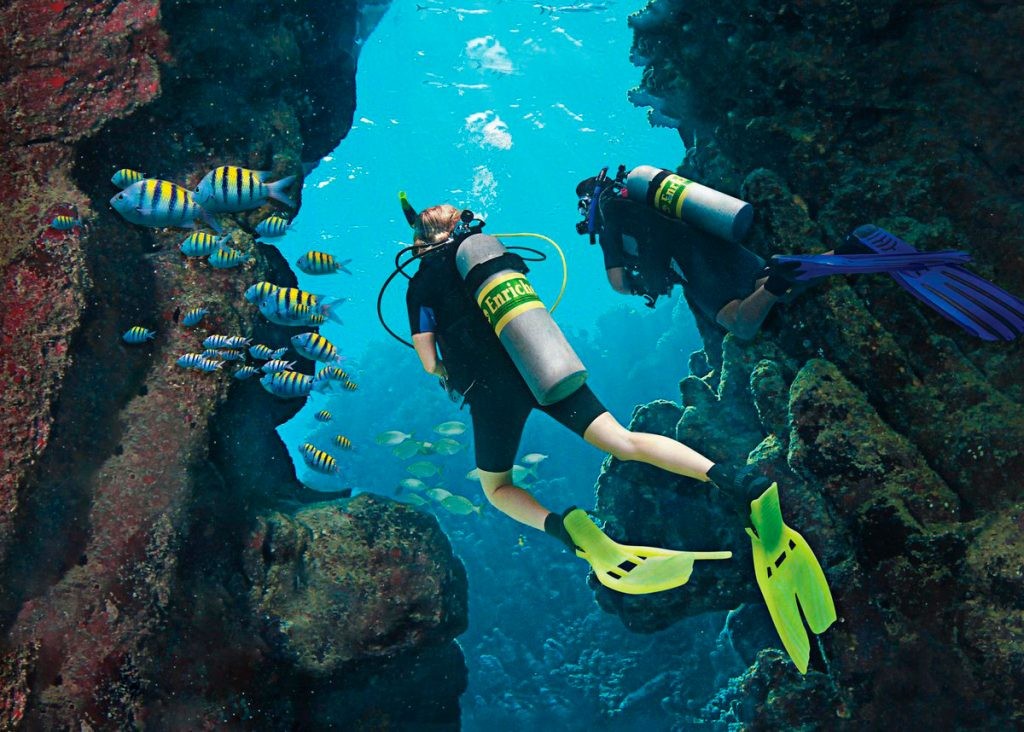
-
Jul 18, 2025
As you start your scuba diving adventure, you will quickly see many technical terms related to diving. One of the most frequently used and most important technical terms you will hear in diving is Nitrox, also referred to as Enriched Air Nitrox or EANx. Nitrox is a gas for breathing under water that has a higher concentration of oxygen and a lower concentration of nitrogen than normal air. Whether you are a novice scuba diver beginning your diving expedition or an advanced scuba diver looking to further your underwater capabilities and education, understanding and utilizing Nitrox will allow you to enhance your safety and enjoyment when you are under the sea. Nitrox is a specialized breathing gas that contains a higher concentration of oxygen and a lower concentration of nitrogen than the air you breathe at sea level.
This makes it the preferred breathing gas among experienced divers looking to enhance dive bottom times without susceptibility to decompression sickness and, when compared to diving only using air, nitrogen narcosis risk is also minimized. In this guide, we will dive into what Nitrox is, as well as the advantages of diving with Nitrox, who should use Nitrox, and how you can successfully become Nitrox certified and dive with Nitrox.
If you are looking to scuba dive or scuba dive more than once while you are in the beautiful, pristine waters of the Andaman Islands, there is no better place to start your or your advanced scuba diving training than at Dive Andaman. Dive Andaman has advanced dive sites, all of which are excellent conditions for scuba diving, PADI Certification courses your local dive shop may or may not offer, and experienced instructors and dive guides that you will have to book your scuba diving adventure with, so there is no better place to learn how to dive with Nitrox, than Dive Andaman, India's best scuba diving location.
What is Nitrox in Scuba Diving
Nitrox also referred to as enriched air nitrox or EANx is a breathing gas used for scuba diving that has a higher proportion of oxygen and a lower proportion of nitrogen than normal air. Nitrox mixtures typically contain 32% to 36% oxygen. Since using Nitrox lowers your nitrogen intake, it allows divers to increase their bottom time and reduce their surface interval time in between dives without increasing their chances of getting decompression sickness. Using Nitrox is particularly useful for repetitive dives and for multi-day diving trips. In order to dive safely with Nitrox, divers must take a Nitrox course, which is offered at reputable dive centers such as Dive Andaman.
Standard air used in scuba tanks contains approximately:
- 21% Oxygen
- 79% Nitrogen
Nitrox mixtures typically contain:
- 32% to 36% Oxygen (EAN32, EAN36)
- Reduced Nitrogen content
The reduction in nitrogen is what makes Nitrox particularly attractive to divers, especially when doing multiple dives over several days.
Why Do Divers Use Nitrox?
There are many factors that come into play when choosing to dive with Nitrox, or Enriched Air Nitrox, however the main reason is simply "it allows divers to spend more time underwater and feel better after the dive." Because Nitrox contains less nitrogen than regular air, you absorb less nitrogen while diving at a certain depth. The reduction in nitrogen can lead to longer bottom times, particularly at certain depths where nitrogen limits would be of concern. This is certainly advantageous for divers that plan multiple dives per day, such as on liveaboards or diving trips to places like the Andaman Islands.
When you are working with less nitrogen, it is going to lead to shorter surface intervals, which can lead to a more efficient and enjoyable dive day. Many divers report that they feel less tired after Nitrox dives, which is a definite bonus when you are diving two or more days in a row. Most notably, when done correctly, Nitrox could decrease your chance of experiencing decompression sickness, particularly if you are diving within normal recreational depth limits. Nitrox is never intended to be used as a deep gas beyond 40 meters, but it is a great and sensible option for divers that want to enjoy their time underwater. Getting certified in Nitrox is an easy process, and dive centers like Dive Andaman provide an opportunity that makes the learning process uncomplicated, safe and immensely gratifying. Let’s understand them in an easy manner:
1. Extended Bottom Time
Nitrox has less nitrogen, divers absorb less nitrogen during a dive. This allows for longer bottom times, especially at depths of 18–30 meters. For example, on a dive to 24 meters, Nitrox might let you stay underwater up to 50% longer compared to diving with regular air.
2. Shorter Surface Intervals
Provides a longer adventure time under the water. Lower nitrogen absorption also means your body needs less time to off-gas between dives. This is particularly useful for divers on liveaboards or those doing multiple dives per day.
3. Reduced Risk of Decompression Sickness
Ensures the safety and health-related issues under the water due to its stability. Because you take in less nitrogen, the risk of nitrogen narcosis and decompression sickness (DCS) is significantly reduced when diving within safe limits.
4. Less Fatigue
Enjoy an energetic ride! Many divers report feeling less tired after Nitrox dives, especially when doing multiple dives over consecutive days. While this hasn’t been scientifically proven for everyone, it's a frequently reported benefit.
When Should You Use Nitrox?
- Nitrox is especially useful in the following scenarios:
- Liveaboard trips with multiple dives per day
- Dive vacations where you're diving several days in a row
- Photography dives, where you want to stay longer at mid-depths
- Wreck or reef exploration that doesn’t require extreme depth
However, Nitrox isn’t beneficial for deep diving beyond recreational limits, because the increased oxygen percentage can become toxic at greater depths.
Are There Any Risks?
Yes, there are specific considerations and risks associated with Nitrox which are:
- Oxygen Toxicity: Breathing high levels of oxygen at depth can be dangerous. Each Nitrox mix has a maximum operating depth (MOD), and divers must stay within it.
- Training Required: Using Nitrox safely requires special training to analyze gas mixtures, calculate MODs, and plan your dives accordingly.
That’s why it's essential to get certified before using Nitrox.
How Do You Get Certified to Dive with Nitrox?
Gaining a Nitrox certification, or Enriched Air Nitrox (EANx), is a simple yet very beneficial activity for any diver who wants to increase dive time and improve safety underwater. The feedback from divers completing the Nitrox certification course, generally offered by training organizations like PADI and SSI, as well as many smaller organizations, is overwhelmingly positive. Essentially, this course will help you understand how to safely plan for and undertake diving using enriched air which contains a higher amount of oxygen, less nitrogen and usually the diver uses a Nitrox respiratory gas with mixed gas analysis of Oxygen and nitrogen.
In simple terms it is a specialty course you can complete in a few hours, (usually in a single day). The course contains both theoretical and practical aspects. You will learn how to analyze the oxygen content in your tank, set your dive computer for Nitrox, work out maximum operating depths and that toxicity for the exposure to oxygen needs to be contained. It can be nice to note that you do not need to be an advanced diving to take this course.
The only requirement for this course is to have an Open Water Diver certification. Most dive centers have eLearning/online learning options for the theory portion of the course which allows you to complete that portion of the course when you choose, while the in-water practical session will be done in person. If you're considering a dive trip to the Andaman Islands, I can't think of a better opportunity to get Nitrox certified than with Dive Andaman.
Their highly experienced instructors, commitment to safety and impeccable dive sites will provide a perfect learning environment to conduct your Nitrox training. In addition, diving with Nitrox, over the course of multiple dives over a period of a few days, will provide you the ultimate advantage to realize the benefits of diving with Nitrox, including longer bottom times and shorter surface intervals. Whether your goal is to prepare for a liveaboard trip or to get the most out of your own diving adventures, the Nitrox Specialty course makes for an easy and meaningful way to level up your diving.
What You’ll Learn:
- How to use an oxygen analyzer to test your tank
- How to manage oxygen exposure
- How to set your dive computer for Nitrox
- How to plan Nitrox dives
Why Choose Dive Andaman for Your Nitrox Certification?
If you're planning to dive in the Andaman Islands, Dive Andaman offers a world-class learning environment, experienced instructors, and stunning dive sites.
- Expert-led PADI courses from beginner to advanced
- Access to unspoiled dive sites in Havelock and Neil Islands
- Top-of-the-line equipment and safety standards
- Personalized instruction in small groups
Nitrox offers Safe Scuba Diving Experience
Nitrox is a game-changer for recreational divers. When used properly, Nitrox will allow you to dive longer, feel better, and dive safer. As with every tool in scuba diving, education and training enable divers to get the best value from their diving experiences. Whether you are scuba diving for the first time or going to get Nitrox certified, Dive Andaman will ensure it is a memorable and safe experience. So if you are excited about the idea of diving longer with relaxed surface intervals, then getting your Nitrox certification is your best progression. And if the allure of exploring the beautiful underwater paradise of the Andaman Islands intrigues you, Dive Andaman will be the best dive operator to assist you into this exciting interim in your dive adventures. Check out Dive Andaman’s Enriched Air (Nitrox) Courses and start planning your next underwater adventure.
Diving Sites in Port Blair
Diving Sites in Havelock Island
Diving Sites in Neil Island
